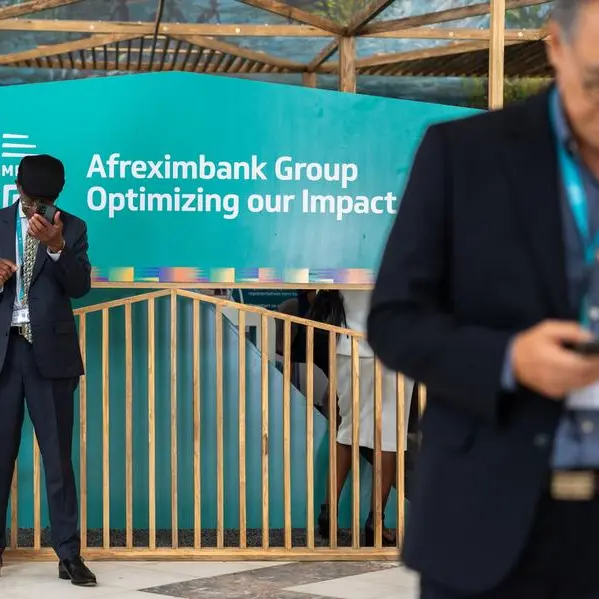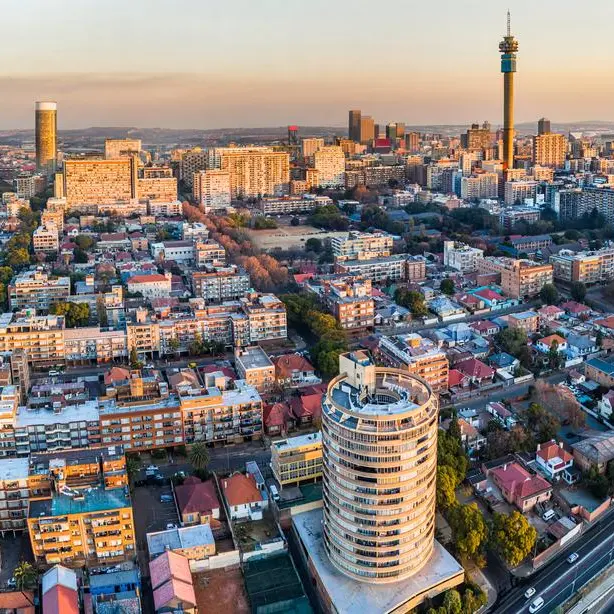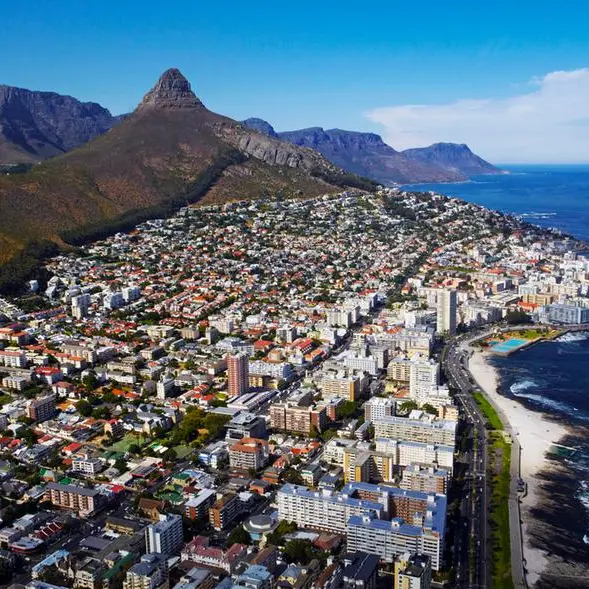PHOTO
Africa needs significant opportunities for infrastructure development, crucial for both regional connectivity and global economic integration.
The potential spans various sectors, including renewable energy, Power-to-X projects, and critical mineral exports, which are essential for the continent’s sustainable development and economic diversification. Urban water supply, waste management, and treatment also require substantial enhancements to meet the growing demands of urbanization. The need for funding the infrastructure in Africa is imminent, translating into statistics showcased below.
Key Infrastructure Challenges and Opportunities, Electricity and Water Access: A staggering 600 million people lack access to electricity, while 418 million are without clean drinking water. This deficiency not only affects the quality of life but also impedes economic activities.
Google announces Umoja, first ever fibre optic cable connecting Africa to AustraliaAfrica’s incorporated society of planters launched, plans value addition for farmers
Transportation and Connectivity: Only 43% of rural populations have access to all-season roads, with just 53% of roads across the continent being paved. The railway network density stands at a mere 2.5 km per 1000 sq km, starkly lower than the global average.
Economic Impact: Inadequate infrastructure limits intra-African trade and global economic participation, contributing only 1% to global GDP and 2% to world trade.
Financial Gaps and Investment Needs:
Annual Financing Requirements: Estimates suggest that between $130 and $170 billion is needed annually for infrastructure development, with a financing gap of $68 to $108 billion.
Role of PPPs: Public-Private Partnerships are deemed essential, yet there is a notable annual financing gap of $68 to $108 billion that needs bridging to leverage private sector investment effectively.Long-Term Growth and Sustainability:
Achieving SDGs: At the current pace of investment, Sub-Saharan Africa would only meet its Sustainable Development Goals by 2117. This underscores the urgent need for funding the infrastructure in Africa.
• Climate Resilience: Despite contributing minimally to global warming, Africa faces significant challenges from climate change, affecting its infrastructure, agriculture, and overall economic stability.The scale and complexity of needs for funding the infrastructure in Africa are immense, but so are the opportunities for investors and governments to foster sustainable and inclusive growth through strategic infrastructure development.
Obstacles to Securing Funding
Corruption and Governance: Effective governance is crucial for securing funding, yet corruption remains a significant barrier. This not only deters international investors but also complicates public-private partnerships, essential for large-scale projects.
Regulatory Frameworks: The strength and clarity of a country’s regulatory environment are pivotal in attracting finance. Unclear and unstable regulatory frameworks increase the perceived risk associated with funding the infrastructure in Africa.
Lack of Bankable Projects are parts of constraints, Many infrastructure initiatives fail to progress beyond the planning stages due to insufficient funding commitments, largely stemming from their lack of bankability.
High Perceived Risk and Limited Resources: The perception of high risk, coupled with limited domestic resource mobilization, severely impacts investor willingness of funding the infrastructure in Africa.
Weak Domestic Participation: The involvement of local stakeholders in funding the infrastructure in Africa is often minimal, which can lead to misalignment with community needs and priorities.
Political Instability and Sovereign Risks: These factors make Africa less attractive to private investors, who fear instability might jeopardize their returns.
High Debt Levels: With public debt soaring, many African countries find themselves with diminished fiscal space, thereby reducing their ability to fund infrastructure internally.Project-Specific Issues
Project Planning and Execution: Numerous projects face delays due to inadequate feasibility studies, difficulties in obtaining necessary licenses, and challenges in coordinating multiple stakeholders.
Misalignment with Community Needs: International financial institutions often prioritize large-scale infrastructure like pipelines and dams over projects that directly address immediate needs such as health and education.
By addressing these multifaceted obstacles, stakeholders can enhance the attractiveness and feasibility of funding the infrastructure in Africa, paving the way for more robust development.
The Role of International Donors and Private Investment
International donors and private investment play pivotal roles in funding the infrastructure in Africa. The involvement of these entities not only injects necessary financial resources but also brings expertise and innovation to the table, which are crucial for sustainable development.
Private sector innovation and investment introduces innovative technologies that can significantly reduce costs, increase efficiency, and ensure the longevity of infrastructure projects.
Private investors also contribute to the structuring of projects to ensure they are bankable and capable of generating returns, which is essential for attracting further investment.
They also play a role in managing and diversifying project risks, which is crucial for the stability and success of infrastructure initiatives.Collaborative Efforts for Enhanced Impact
Public-Private Partnerships (PPPs): These arrangements are essential for leveraging both public and private resources for infrastructure development. PPPs help in sharing knowledge, risks, and rewards between the public and private sectors.
Multi-Donor Facilities: These facilities pool resources from multiple donors to fund large-scale projects, thereby reducing the financial burden on any single donor and spreading risk among multiple stakeholders.
Capital Investment Pipelines: They are developed to ensure a steady flow of investment into critical sectors, thereby maintaining the momentum of infrastructure development over the long term.
The synergy between international donors and private investors is essential for addressing Africa’s infrastructure challenges. By combining their strengths, these stakeholders can ensure the implementation of robust, sustainable, and economically viable infrastructure projects across the continent.
Innovative Financing Models
Developing Transition Taxonomies: Tailoring transition taxonomies to the specific needs of developing economies can facilitate the entry of ESG funds into African infrastructure projects. These taxonomies guide investment by defining what constitutes a sustainable project within the unique context of Africa’s development.
New ESG Scoring Templates: Implementing ESG scoring templates that reflect the realities of developing economies can help assess the sustainability and impact of projects more accurately, encouraging more informed investment decisions.
Public-Private Partnerships (PPPs)
Strengthening PPP Frameworks: The Infrastructure Consortium for Africa (ICA) and the United Nations Economic Commission for Africa (ECA) are working together to refine the frameworks that govern PPPs, especially in the electricity sector. This initiative aims to address the challenges that hinder the effectiveness of PPPs in fostering infrastructure development.
Enhancing Project Bankability: Making projects more attractive to banks and investors is crucial. This involves not only securing financing but also ensuring that projects are managed and implemented effectively to deliver on their promises.
Green Finance and Blended Finance Strategies
Promoting Green Finance: Green finance integrates financial investment into projects that support the transition towards low-carbon and resource-efficient economies. This approach is crucial for sustainable development in Africa.
Utilizing Blended Finance: Blended finance models use public funds to de-risk private investments, attracting more significant private sector participation. These models are essential for mobilizing the large-scale investment required for funding the infrastructure in Africa.
Leveraging Institutional Capital
Structured Investment Vehicles: Innovative structured vehicles are needed to align abundant institutional investment capital with viable infrastructure projects. This alignment is crucial for translating financial resources into tangible development outcomes.
Educational and Policy Initiatives: Increasing awareness among policymakers and the public about the complexities of infrastructure financing can lead to more supportive regulatory environments and more successful project implementations.
These innovative financing models are designed to overcome traditional barriers and unlock new opportunities for funding the infrastructure in Africa, ensuring that investments are both sustainable and impactful.
Towards Sustainable Infrastructure Development Emphasizing Environmental and Economic Sustainability
Natural Gas as a Transitional Energy Source: Recognizing natural gas as a feasible solution for immediate electricity needs, Africa can leverage this resource to enhance energy security and job creation, reducing dependency on volatile international energy markets.
Public-Private Partnerships (PPPs): PPPs are instrumental in integrating private sector innovation and resources, thereby improving the efficiency and cost-effectiveness of service delivery in infrastructure projects.
Addressing Trade and Infrastructure Fit: The African Continental Free Trade Area (AfCFTA) aims to reduce trade costs, yet the existing infrastructure remains a significant barrier, emphasizing the need for strategic upgrades to facilitate smoother inter-country trade.
Advancing Financial Strategies for Sustainability
Debt-for-Nature Solutions: Implementing debt-for-climate-and-nature swaps can alleviate the debt burden while promoting environmental conservation efforts in heavily indebted nations.
Performance Bonds for Environmental Goals: In nations with better market access, general-purpose performance bonds can be strategically used to support climate and biodiversity initiatives.
Critical Investment for Biodiversity: Investment is crucial in biodiversity-rich nations like Madagascar, South Africa, and the Democratic Republic of Congo to combat the accelerating biodiversity loss.
Leveraging Technology and Community Involvement
Sustainable Infrastructure Components: Sustainable infrastructure development encompasses energy, water management, and the use of sustainable materials, focusing on innovative practices like recycling and reusing existing resources.
Benefits of Sustainable Practices: The adoption of sustainable infrastructure practices offers multiple benefits including enhanced climate resilience, economic growth through new job opportunities, and social benefits such as increased community engagement.
Successful Case Studies: Projects like the Azura-Edo power plant in Nigeria, Lake Turkana Wind Power in Kenya, and the Ouarzazate Solar Power Station in Morocco exemplify successful sustainable infrastructure initiatives in Africa.
These strategies not only aim to meet the current needs but also ensure that infrastructure development is resilient, economically viable, and beneficial to both the environment and the communities across Africa.
Policy and Regulatory Frameworks Strengthening Policy Measures and Regulatory Frameworks
Enhanced ESG Standards and Coordination
African governments are urged to bolster domestic capacities to adhere to and coordinate on Environmental, Social, and Governance (ESG) standards. This involves constructing robust internal legal frameworks and institutions dedicated to the implementation of these guidelines. Additionally, enhancing coordination across various ministries, agencies, and actors is crucial to unify efforts towards sustainable infrastructure development.
Public-Private Partnerships (PPPs) Enhancement
Successful PPPs hinge on meticulous planning, effective communication, and steadfast commitment from all involved parties. Governments play a pivotal role in ensuring these partnerships flourish by establishing strong monitoring, regulatory, and enforcement mechanisms. Such frameworks not only support the viability of these collaborations but also safeguard against potential political and economic fallout.
Institutional and Fiscal Reforms
Research indicates that four years of continuous improvements in regulatory frameworks could elevate GDP by an additional 0.8% above the baseline scenario with no reforms. Particularly, institutional reforms tend to yield higher returns in low-income countries compared to middle-income ones. These reforms are essential for creating a conducive environment for private participation in infrastructure (PPI), which is significantly driven by the quality of national institutions.
Transparent and Supportive Policy Environment
To achieve sustainable infrastructure, policy measures need to be clear and supportive, encompassing sustainability in procurement and investment plans. Transparency in the public sector is essential to foster trust and encourage private investment. Policies should facilitate the publication of long-term infrastructure plans and promote the benefits of projects to garner public and cross-jurisdictional support.
Mobilizing Finance through Innovative Strategies
Governments should focus on mobilizing finance by implementing tax support mechanisms, attracting private investors, funding upfront costs, and enhancing capital markets. These efforts are complemented by international initiatives like the Programme for Infrastructure Development in Africa (PIDA), which aims to improve infrastructure through strategic projects and mechanisms like the Service Delivery Mechanism (SDM) and One-Stop-Border-Posts (OSBP).
By addressing these critical areas, African nations can create a more attractive landscape for infrastructure investments, ultimately leading to robust, sustainable development across the continent.
Strategies for Overcoming Funding Challenges
Strengthening Public-Private Partnerships (PPPs). The African Development Bank (AfDB) emphasizes PPPs as a vital mechanism to bridge the infrastructure funding gap in Africa. This focus supports the development of both economic and social infrastructure projects.
The PPP Strategic Framework (2021-2031) by the AfDB aims to enhance private sector participation and scale up financing, effectively leveraging private investment to meet public goals.
The quality of institutions is a pivotal driver of Private Participation in Infrastructure (PPI) in Sub-Saharan Africa. Strengthening these institutions can significantly enhance the attractiveness and feasibility of infrastructure projects.
Initiatives to improve institutional frameworks and capacities ensure that projects are not only bankable but also aligned with the developmental goals of the region.
Copyright © 2022 Nigerian Tribune Provided by SyndiGate Media Inc. (Syndigate.info).





















